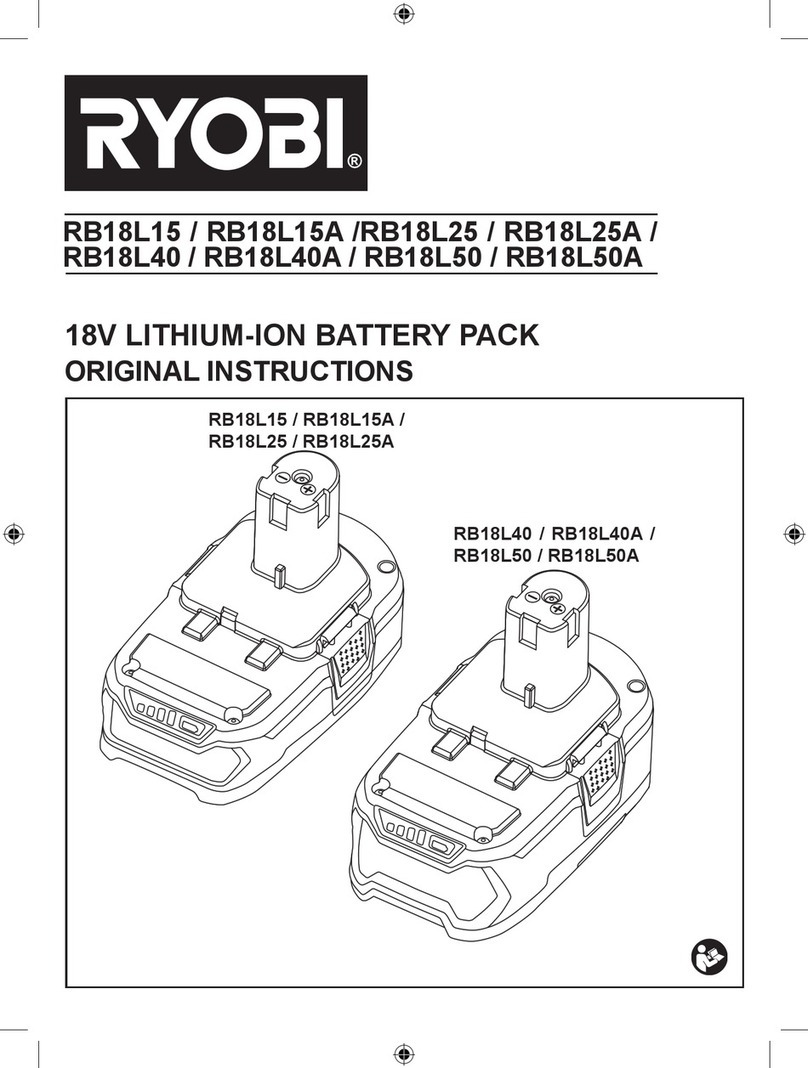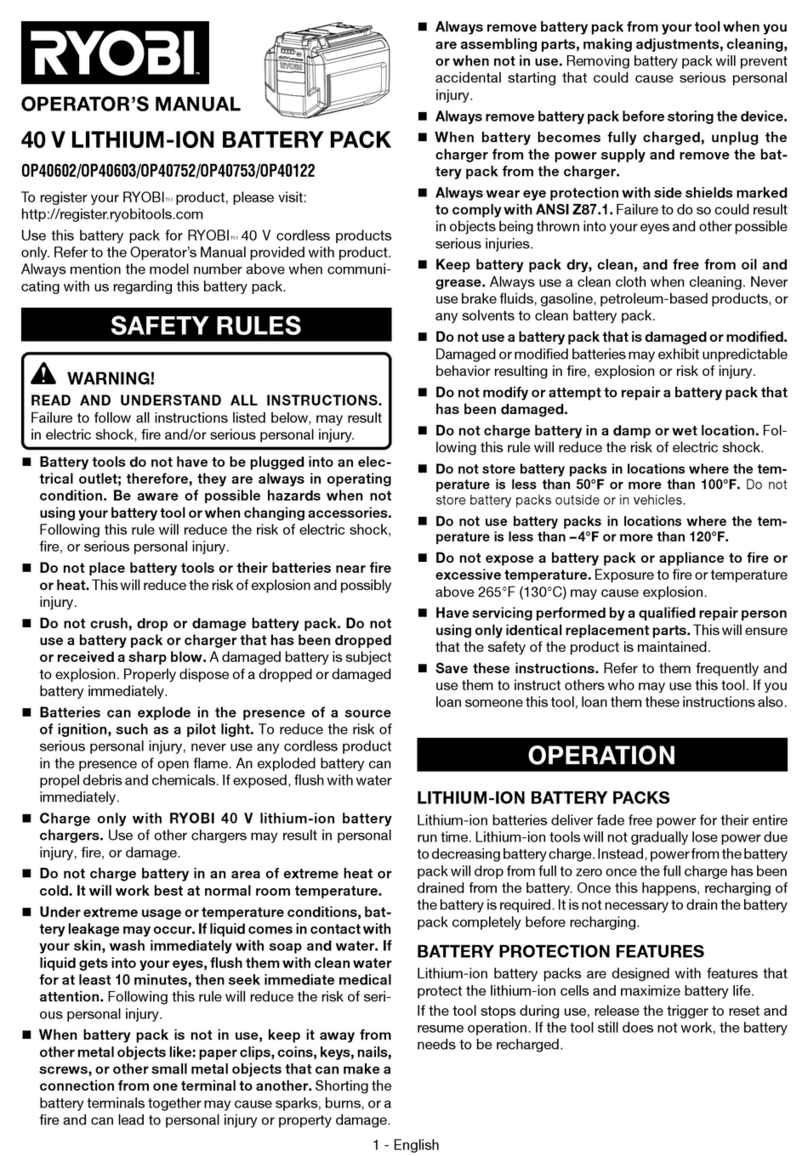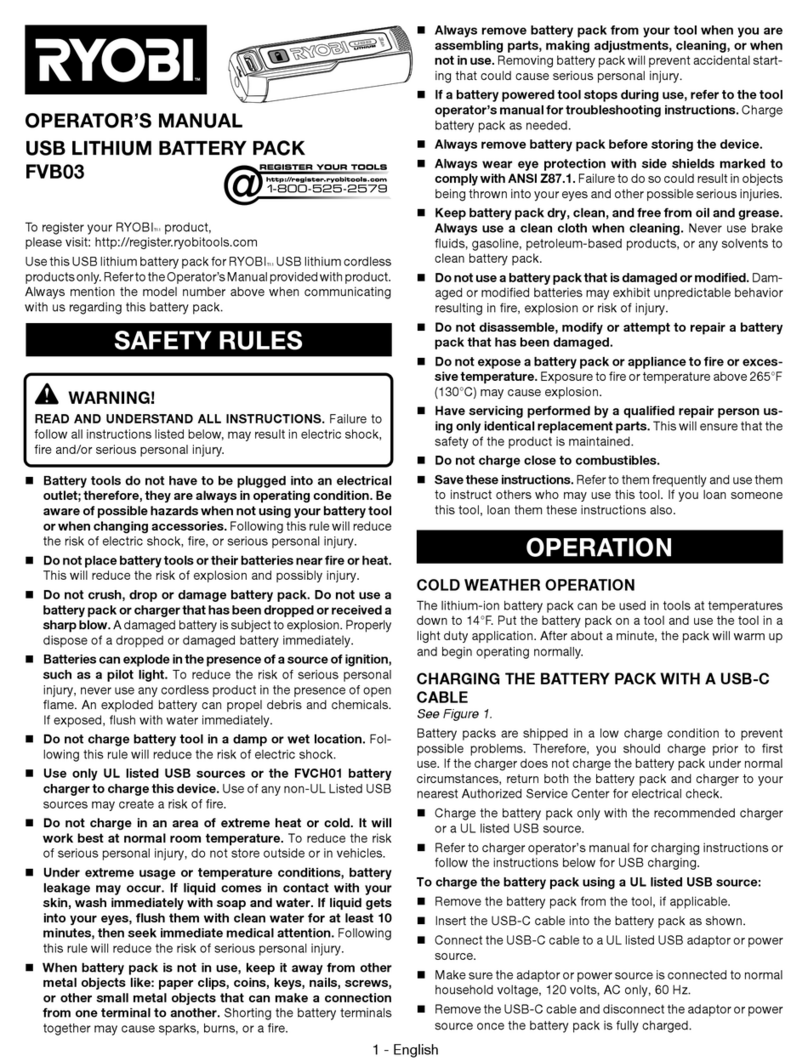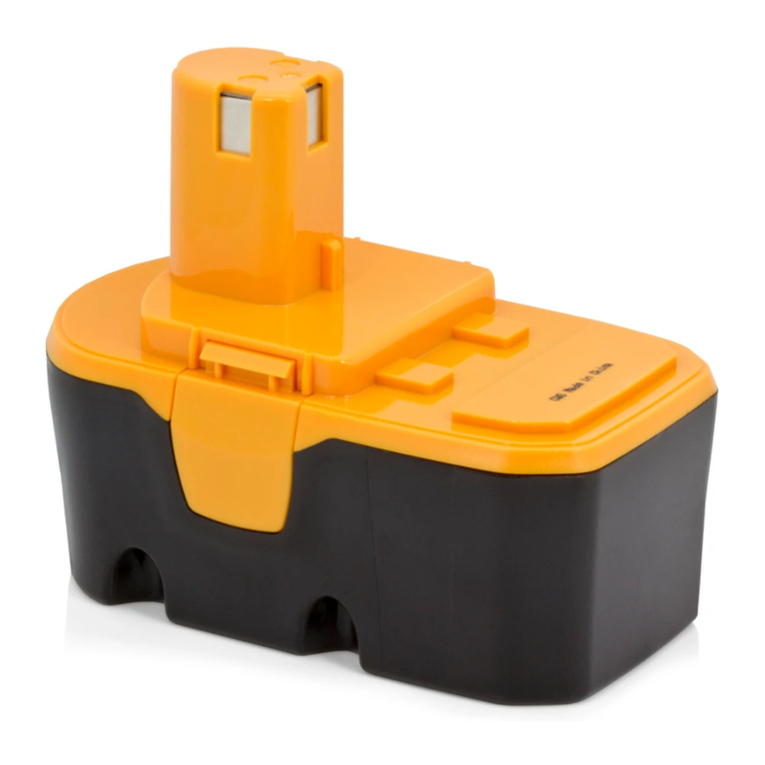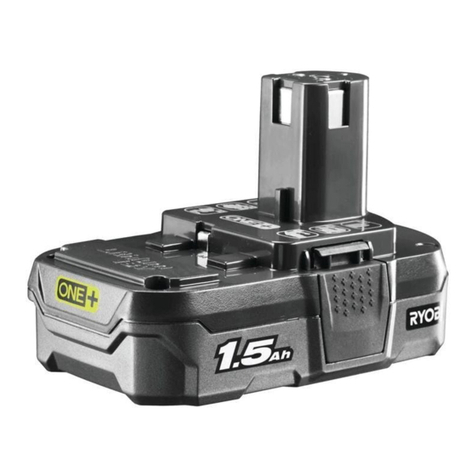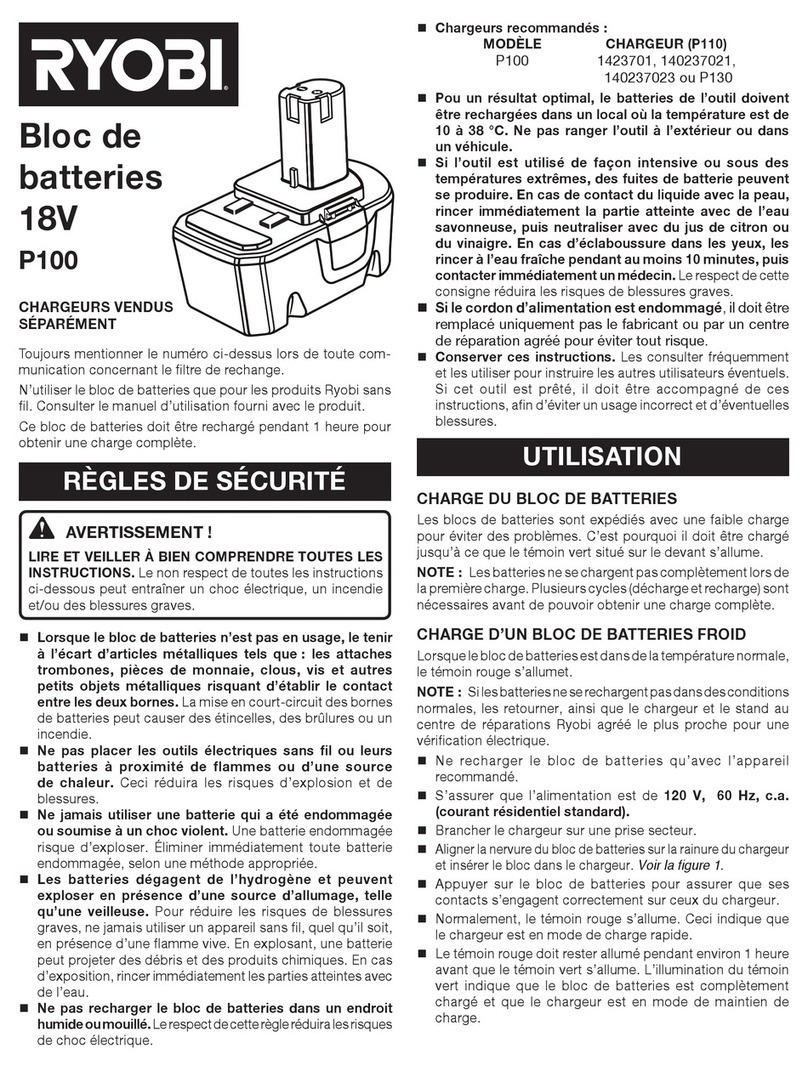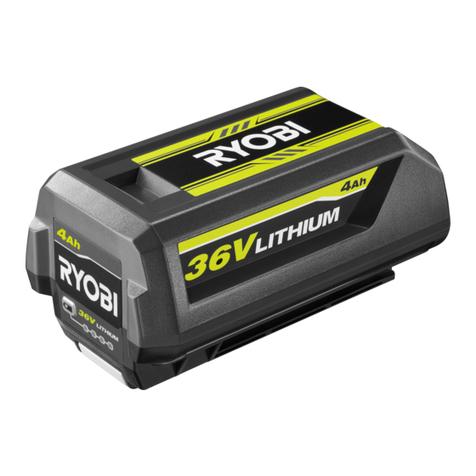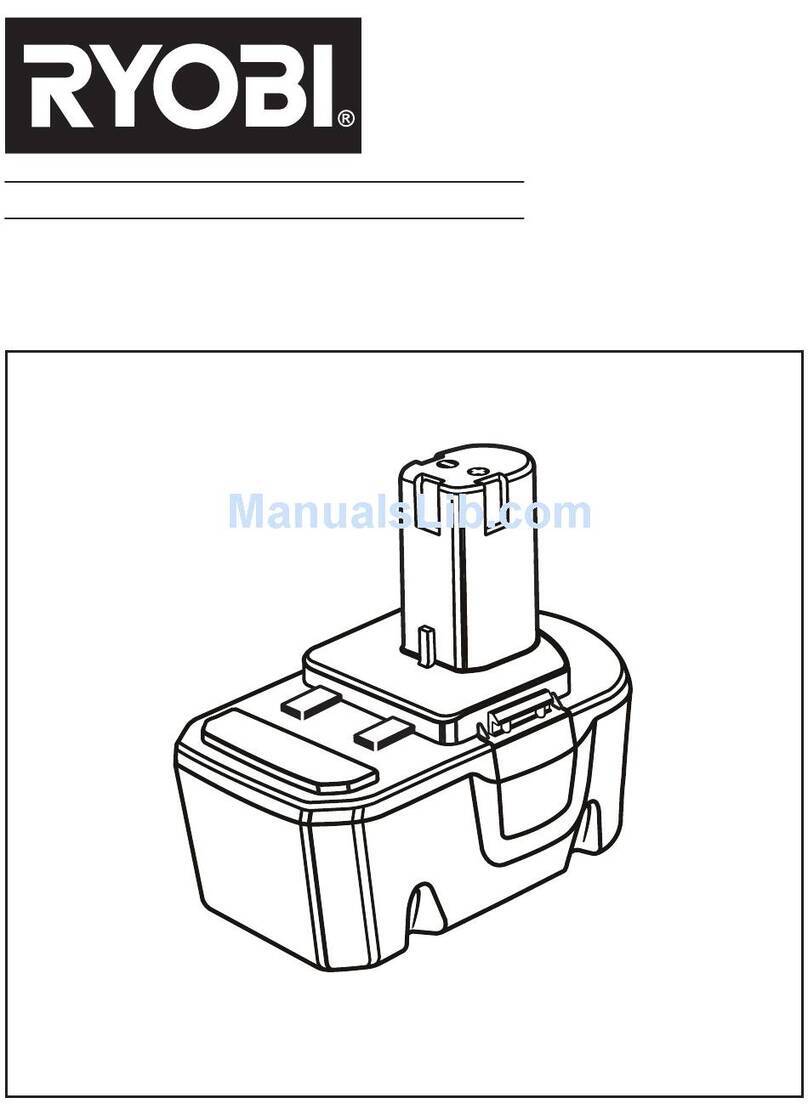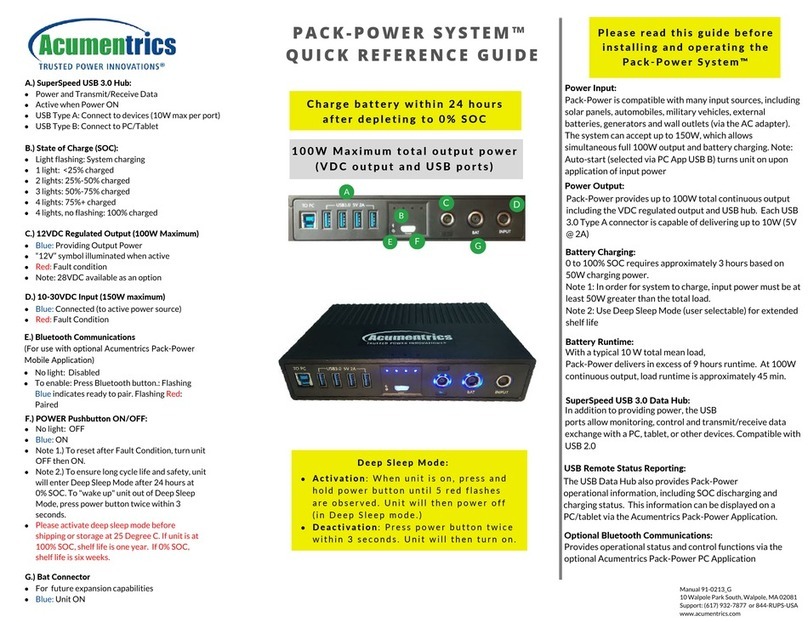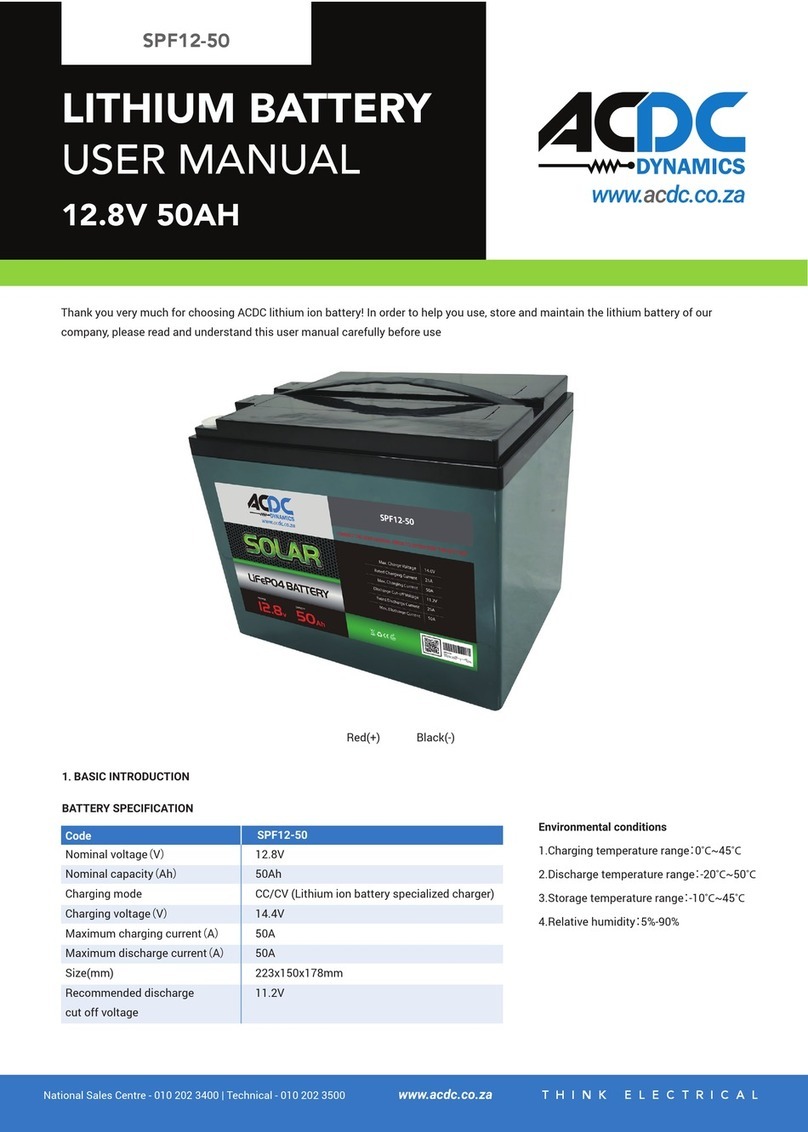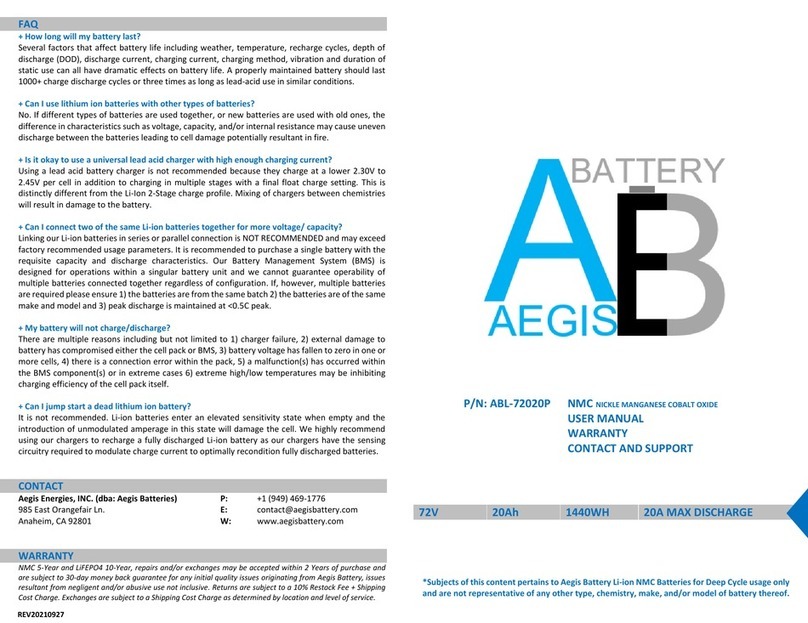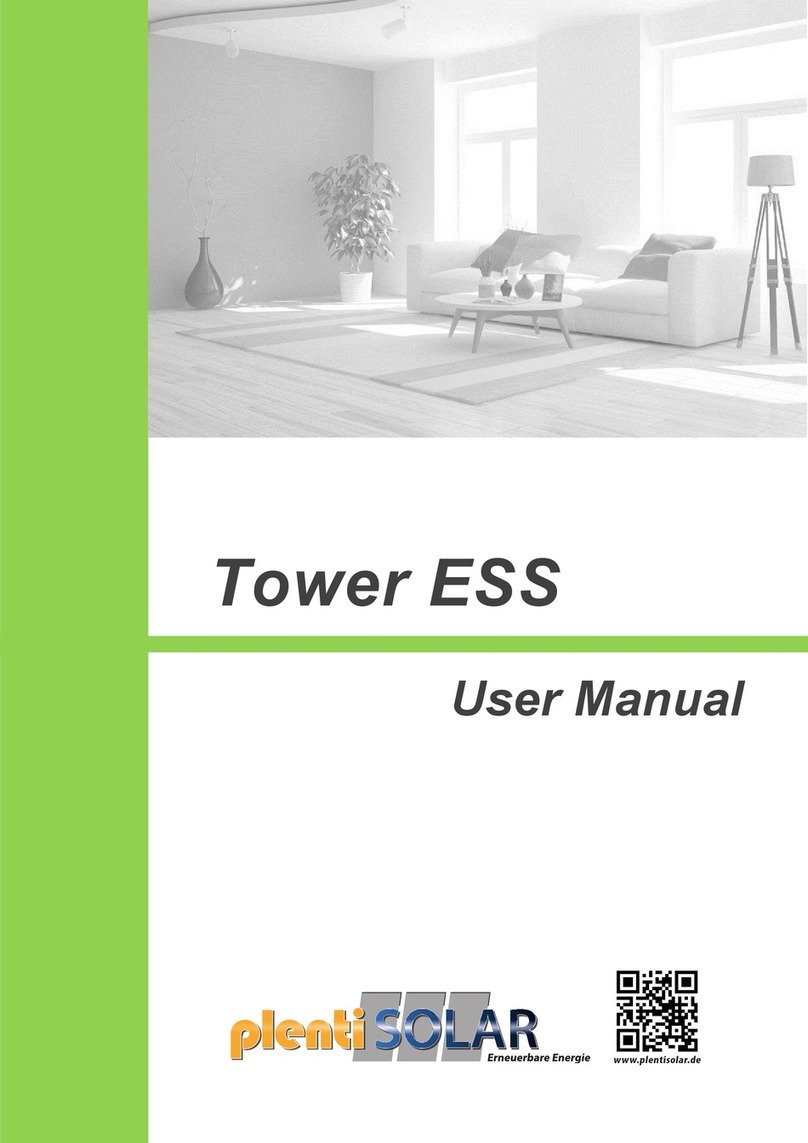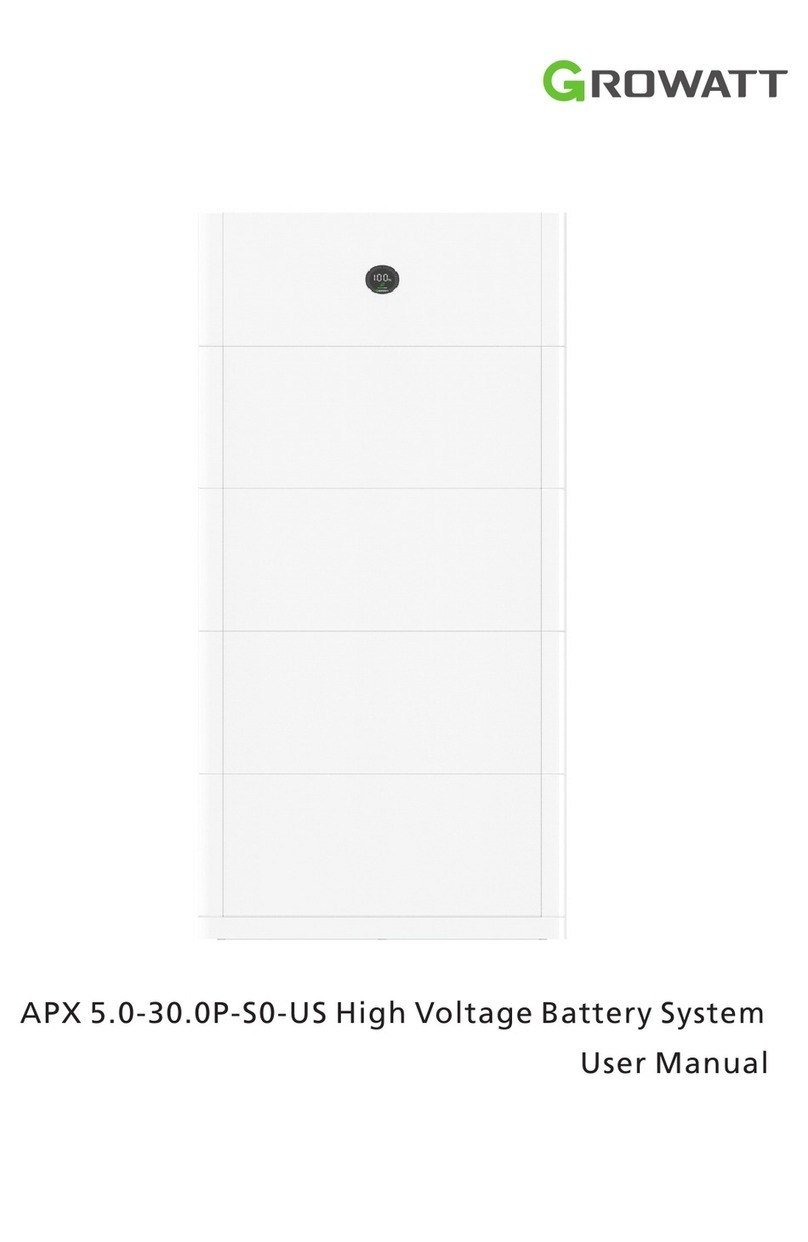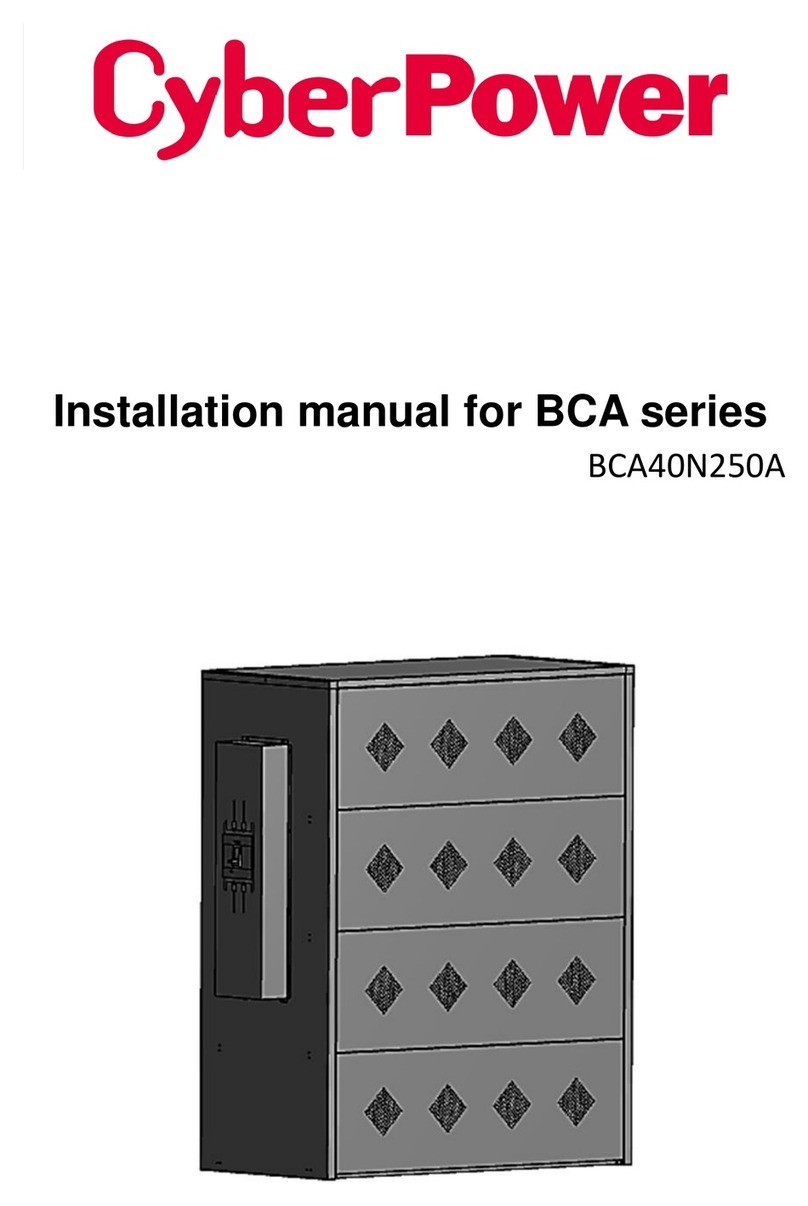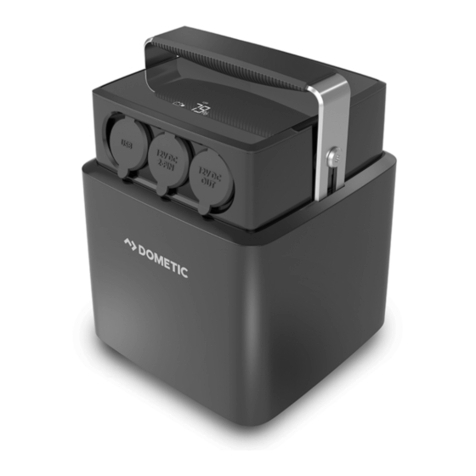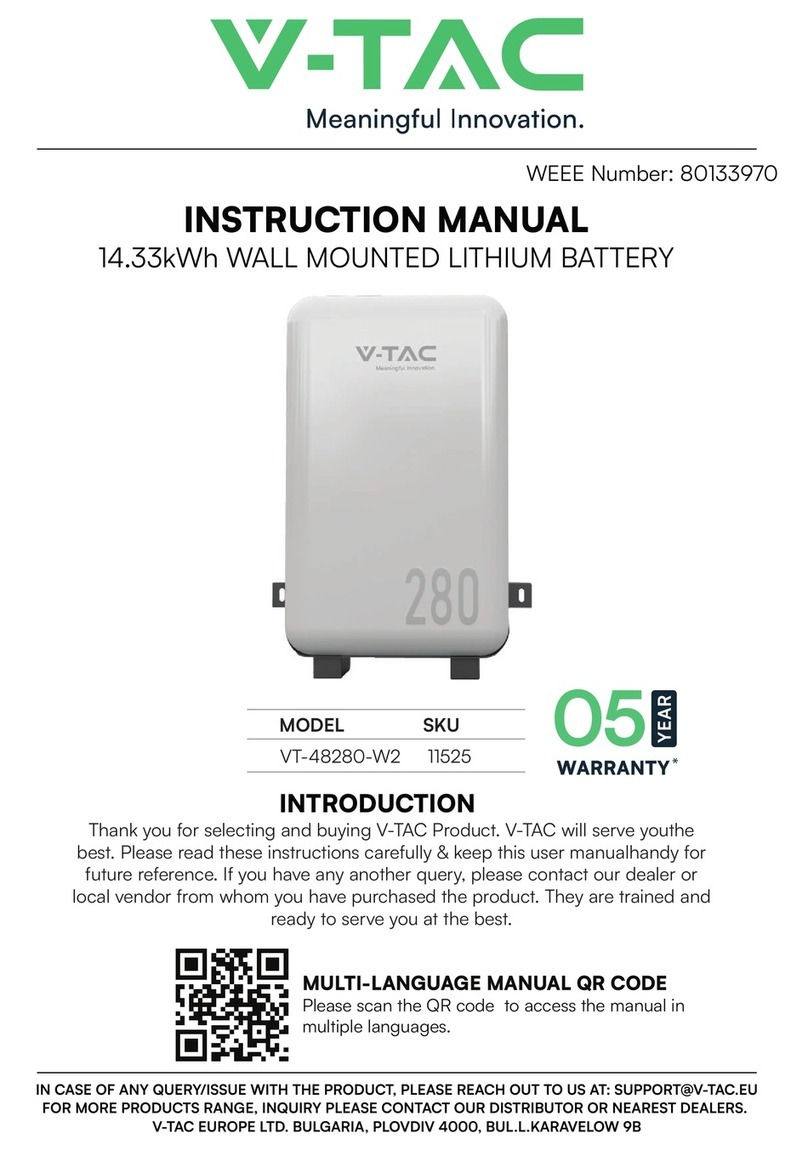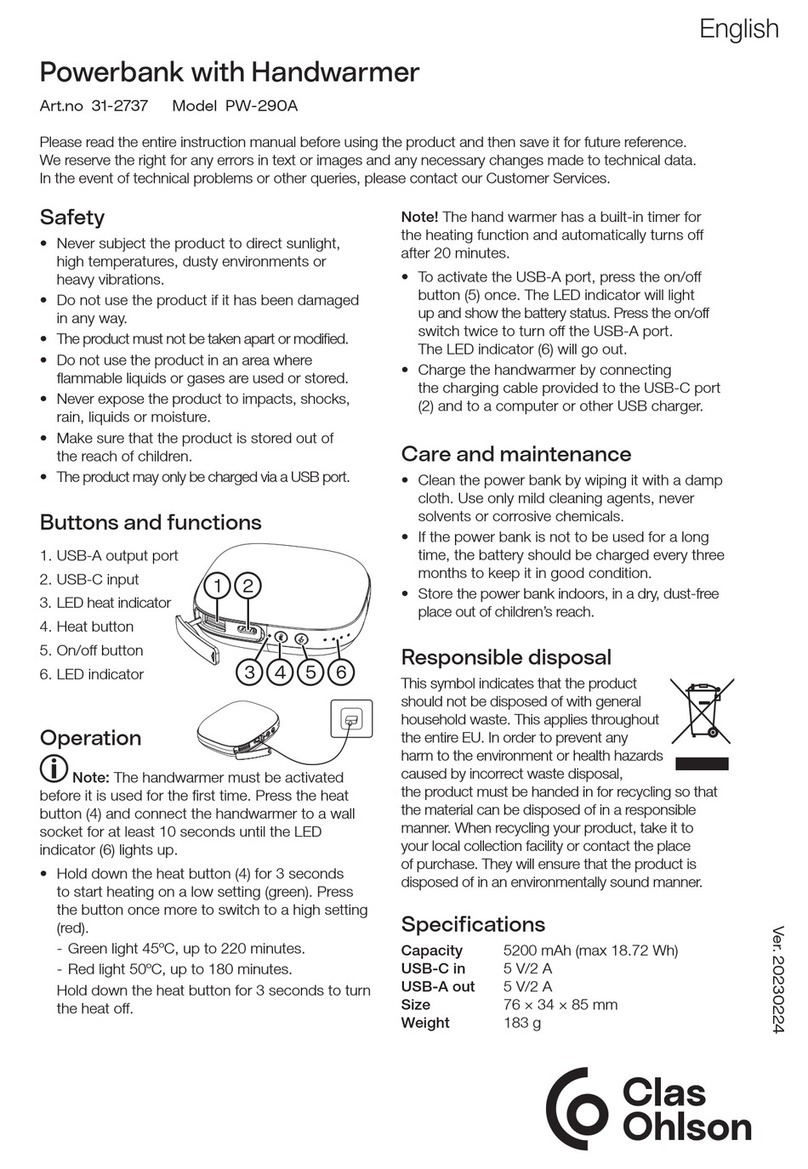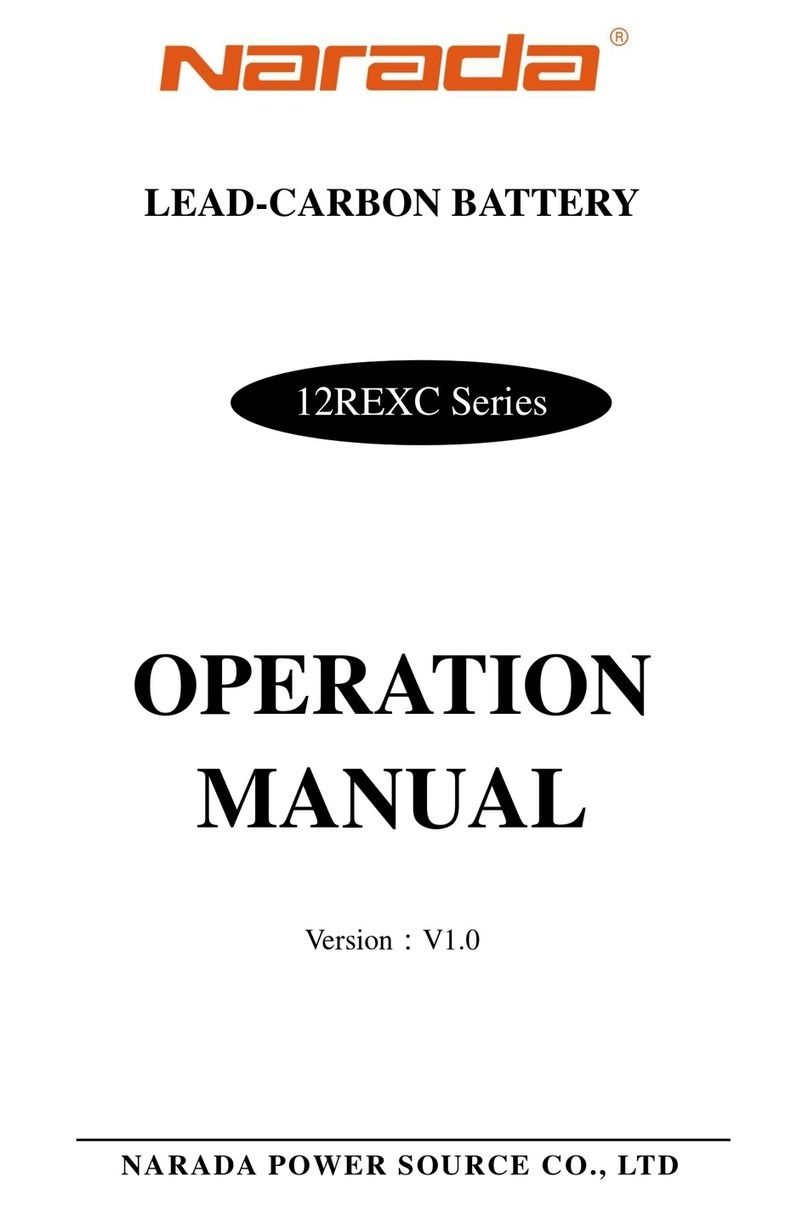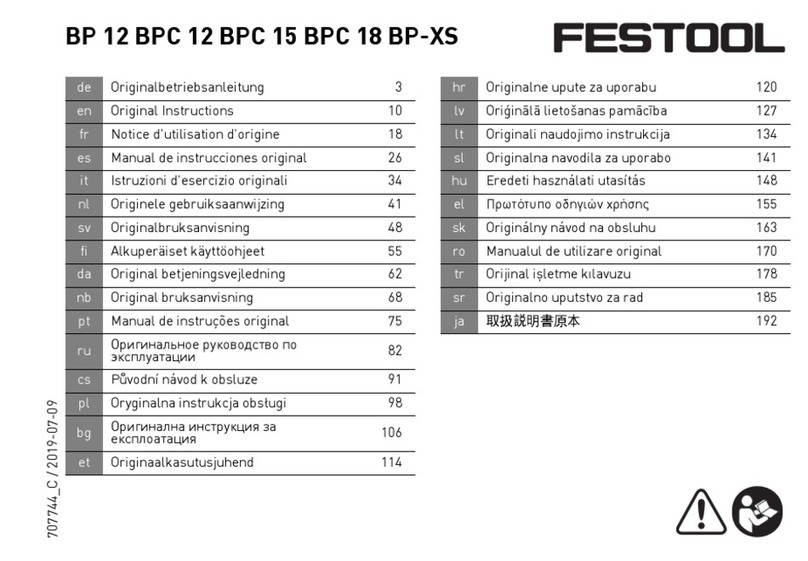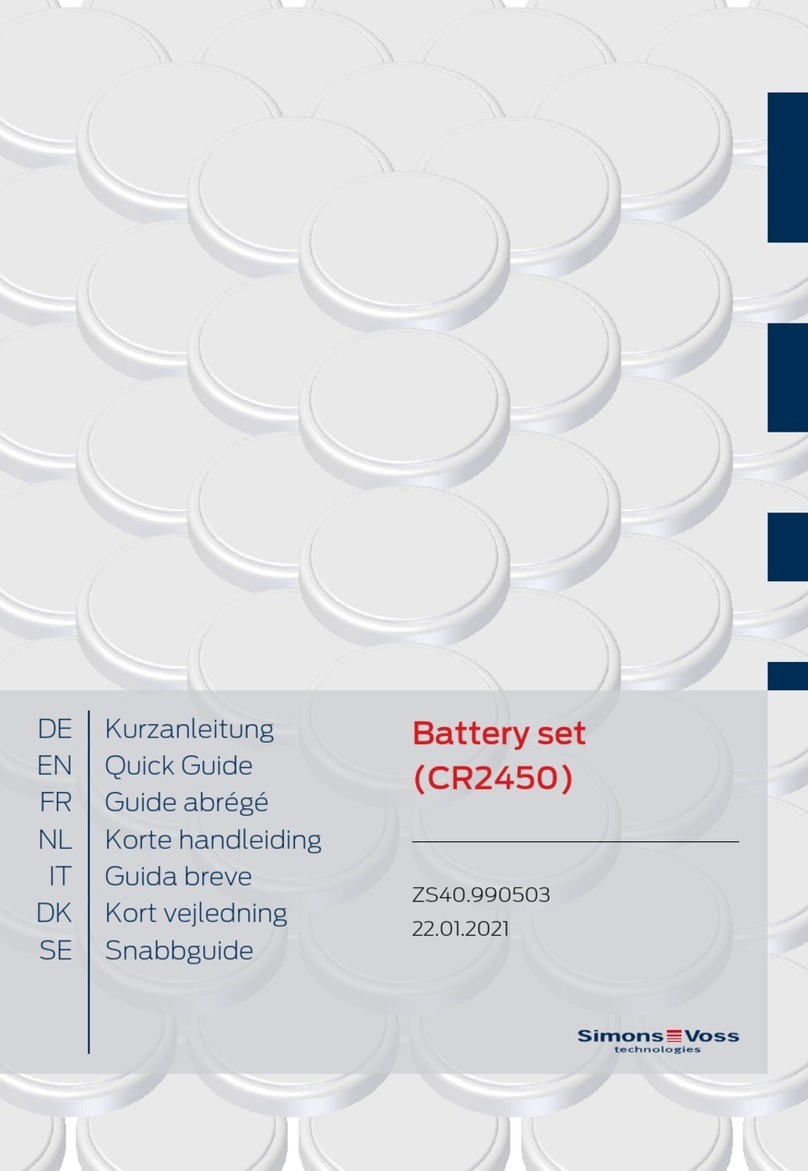
2
IMPORTANT!
It is essential that you read the instructions in this manual
before assembling, operating, and maintaining the
product.
Subject to technical modication.
Safety, performance, and dependability have been given top
priority in the design of your battery pack.
SAFETY INSTRUCTIONS
Always mention the model number when communicating
with RYOBI in regards to battery packs. The R36BTY6
and R36BTY8 battery packs are for RYOBI 36V cordless
products only. Refer to the operator’s manual provided with
the product.
WARNING! Read all safety warnings and all instructions.
Failure to follow the warnings and instructions may result in
electric shock, re, and/or serious injury.
Save all warnings and instructions for future reference.
■Battery tools do not have to be plugged into an
electrical outlet. Therefore, they are always in
operating condition. Be aware of possible hazards
when not using your battery tool or when changing
accessories. Follow this rule to reduce the risk of
electric shock, fire, or serious personal injury.
■Do not place battery tools or their battery packs
near fire or heat. Follow this rule to reduce the risk of
personal injury.
■Do not crush, drop or damage the battery pack. Do
not use a battery pack or charger that has been
dropped or has received a sharp blow. Properly
dispose of a dropped or damaged battery immediately.
■Do not charge a battery tool in a damp or wet
location. Follow this rule to reduce the risk of electric
shock.
■Charge a battery tool in a location where the
temperature is more than 10°C but less than 25°C.
To reduce the risk of serious personal injury, do not store
the battery tool outside or in vehicles.
■Under extreme usage or temperature conditions,
battery leakage may occur. If the liquid comes in
contact with the skin, wash immediately with soap and
water, then neutralize with lemon juice or vinegar. If
liquid gets into your eyes, flush them with clean water
for at least 10 minutes, then seek immediate medical
attention. Follow this rule to reduce the risk of serious
personal injury.
■Save these instructions. Refer to them frequently and
use them to instruct others who may use this product.
If you loan someone this product, loan them these
instructions also to prevent misuse of the product and
possible injury.
BATTERY TOOL USE AND CARE
■Recharge only with the charger specified by the
manufacturer. A charger that is suitable for one type
of battery pack may create a risk of fire when used with
another battery pack.
■Use battery tools only with specifically designated
battery packs. Use of any other battery packs may
create a risk of injury and fire.
■When the battery pack is not in use, keep it away
from other metal objects, like paper clips, coins,
keys, nails, screws or other small metal objects,
that can make a connection from one terminal to
another. Shorting the battery terminals together may
cause burns or a fire.
ADDITIONAL BATTERY SAFETY WARNINGS
WARNING! To reduce the risk of re, personal injury,
and product damage due to a short circuit, never immerse
your tool, battery pack, or charger in uid or allow uid to
ow inside them. Corrosive or conductive uids, such
as seawater, certain industrial chemicals, and bleach or
bleach-containing products, etc., can cause a short circuit.
TRANSPORTING LITHIUM BATTERIES
Transport the battery in accordance with local and national
provisions and regulations.
Follow all special requirements on packaging and labelling
when transporting batteries by a third party. Ensure that
no batteries can come in contact with other batteries
or conductive materials while in transport by protecting
exposed connectors with insulating, non-conductive caps or
tape. Do not transport batteries that are cracked or leaking.
Check with the forwarding company for further advice.
BATTERY PACK FEATURES
FUEL GAUGE
To display the amount of charge left in the battery pack,
press the fuel gauge button.
■If four LEDs glow green, the battery pack is fully charged.
The battery pack capacity is between 85%–100%.
■If three LEDs glow green and one is off, the battery pack
capacity is between 60%–85%.
■If two LEDs glow green and other two are off, the battery
pack capacity is between 35%–60%.
■If only one LED glows green and others are off, the
battery pack capacity is lower than 35%. In this case,
the battery pack can be used as usual until automatically
turned off by the control program.
■If only one LED glows green but the battery pack cannot
release power, the battery pack needs to be charged.
As the battery pack ages, the accuracy of the dierent LED
indicators may change. Use the percentages as a guide
only.
R36BTY6
1
2
